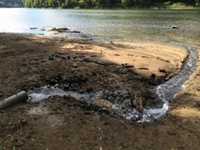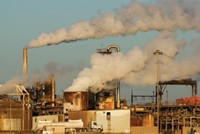Advertisement
Grab your lab coat. Let's get started
Welcome!
Welcome!
Create an account below to get 6 C&EN articles per month, receive newsletters and more - all free.
It seems this is your first time logging in online. Please enter the following information to continue.
As an ACS member you automatically get access to this site. All we need is few more details to create your reading experience.
Not you? Sign in with a different account.
Not you? Sign in with a different account.
ERROR 1
ERROR 1
ERROR 2
ERROR 2
ERROR 2
ERROR 2
ERROR 2
Password and Confirm password must match.
If you have an ACS member number, please enter it here so we can link this account to your membership. (optional)
ERROR 2
ACS values your privacy. By submitting your information, you are gaining access to C&EN and subscribing to our weekly newsletter. We use the information you provide to make your reading experience better, and we will never sell your data to third party members.
Energy
Reactions: Extracting lithium from fracking wastewater
June 29, 2024
| A version of this story appeared in
Volume 102, Issue 20
Letters to the editor
Extracting lithium from fracking wastewater

Please find my comments below on a recent C&EN article “Massive Potential Lithium Source Found in Pennsylvania.”
I am optimistic about the potential application of direct lithium extraction technology on the fracking wastewater from Pennsylvania shale gas wells. Lithium extraction and recovery from complex brines become technically possible with emerging promising technologies such as adsorption by metal oxides and hydroxides, solvent extraction using lithium-selective solvents, sorption using inorganic molecular sieves and ion-exchange sorbents, etc. The brines studied in laboratory research contain lithium concentration as low as 0.12 ppm in the seawater. The lithium contents in oil field water are usually much higher than those in seawater, and therefore it is more realistic for the application of the above technologies. Larger-scale pilot tests and commercial operations have been conducted over the years at numerous geothermal power plants in the US with the proposed process of pretreatment, recovery, and purification of lithium and other valuable materials from geothermal brines. In these complex geothermal brines, lithium is a minor element; the majority is other more abundant elements, including alkali metals, alkaline earth metals, iron and base metals, and metalloids. The lithium content in one of the geothermal brines, the Salton Sea brine in California, is about 200 ppm, which is close to the average lithium concentration of the northeastern Pennsylvania fracking waste brines.
To better understand the economics and environmental sustainability, we need more field studies at larger scales so we can advance commercial-scale lithium extraction and recovery processes. After additional recovery of lithium and any other valuable materials, the remaining contaminant-laced fracking wastewater can be treated under the current injection and disposal practices for fracking wastewater, as there are no radical changes in the waste stream.
Chunli Li
The Woodlands, Texas





Join the conversation
Contact the reporter
Submit a Letter to the Editor for publication
Engage with us on Twitter